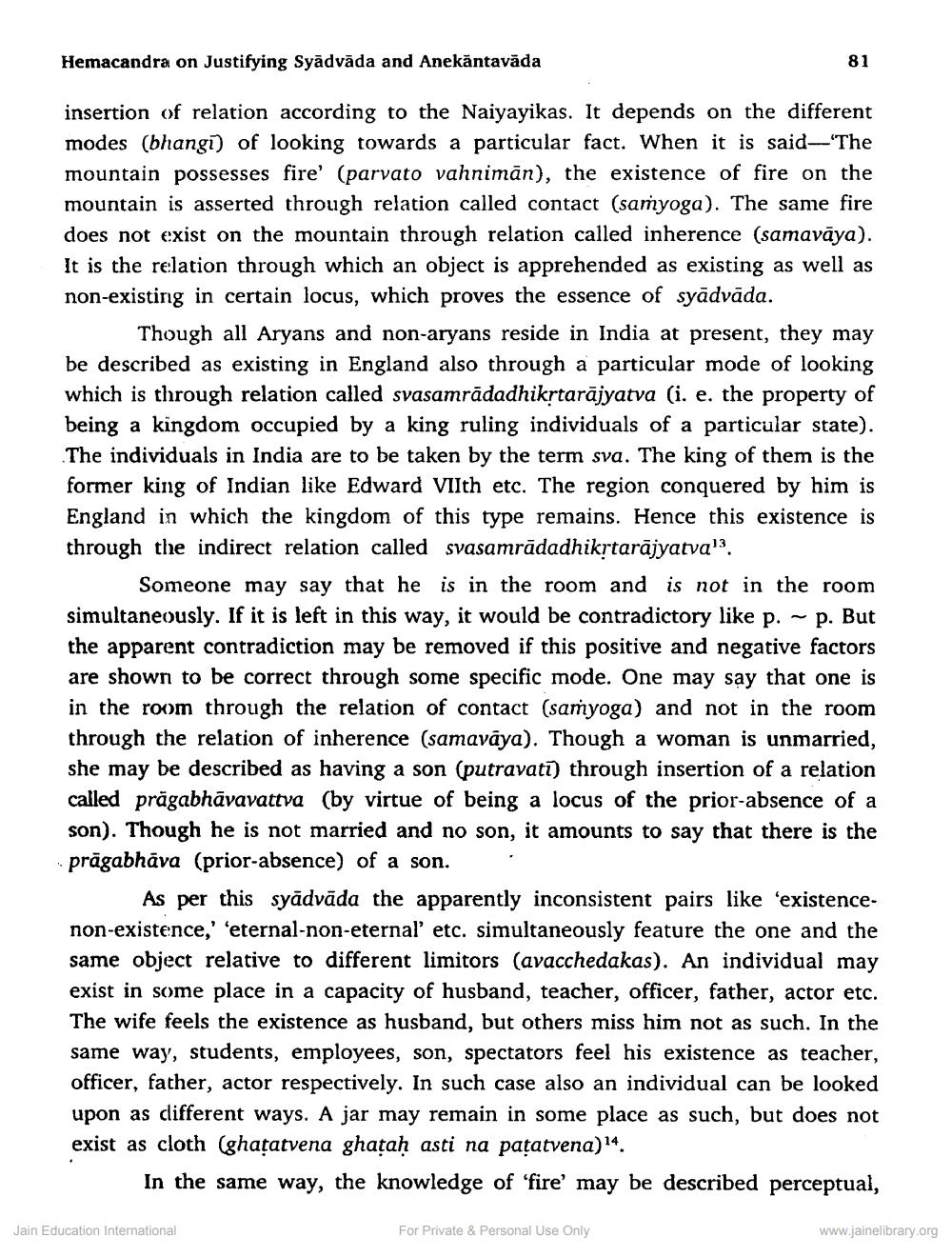________________
Hemacandra on Justifying Syādvāda and Anekāntavāda
81
Care
insertion of relation according to the Naiyayikas. It depends on the different modes (bhangi) of looking towards a particular fact. When it is said-'The mountain possesses fire' (parvato vahnimān), the existence of fire on the mountain is asserted through relation called contact (samyoga). The same fire does not exist on the mountain through relation called inherence (samavāya). It is the relation through which an object is apprehended as existing as well as non-existing in certain locus, which proves the essence of syādvāda
Though all Aryans and non-aryans reside in India at present, they may be described as existing in England also through a particular mode of looking which is through relation called svasamrādadhikrtarājyatva (i. e. the property of being a kingdom occupied by a king ruling individuals of a particular state). The individuals in India are to be taken by the term sva. The king of them is the former king of Indian like Edward VIIth etc. The region conquered by him is England in which the kingdom of this type remains. Hence this existence is through the indirect relation called svasamrādadhikrtarājyatva'.
Someone may say that he is in the room and is not in the room iltaneously. If it is left in this way, it would be contradictory like p. ~ p. But the apparent contradiction may be removed if this positive and negative factors are shown to be correct through some specific mode. One may say that one is in the room through the relation of contact (samyoga) and not in the room through the relation of inherence (samavāya). Though a woman is unmarried, she may be described as having a son (putravati) through insertion of a relation called prāgabhāvavattva (by virtue of being a locus of the prior-absence of a son). Though he is not married and no son, it amounts to say that there is the prägabhāva (prior-absence of a son.
As per this syādvāda the apparently inconsistent pairs like 'existencenon-existence,' 'eternal-non-eternal etc. simultaneously feature the one and the same object relative to different limitors (avacchedakas). An individual may exist in some place in a capacity of husband, teacher, officer, father, actor etc. The wife feels the existence as husband, but others miss him not as such. In the same way, students, employees, son, spectators feel his existence as teacher, officer, father, actor respectively. In such case also an individual can be looked upon as different ways. A jar may remain in some place as such, but does not exist as cloth (ghatatvena ghatah asti na pațatvena) 14.
In the same way, the knowledge of 'fire' may be described perceptual,
Jain Education International
For Private & Personal Use Only
www.jainelibrary.org




